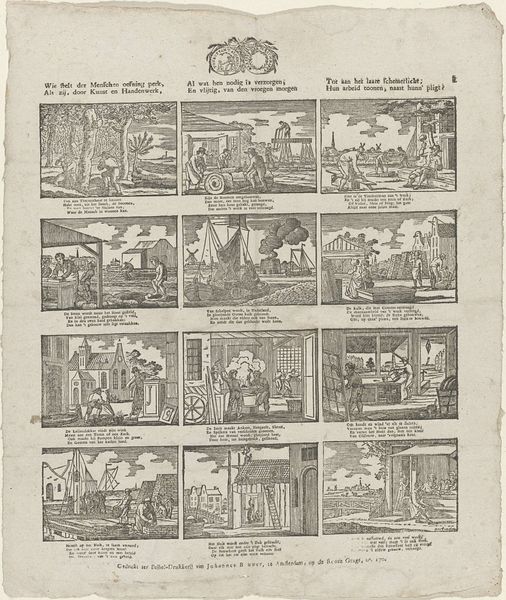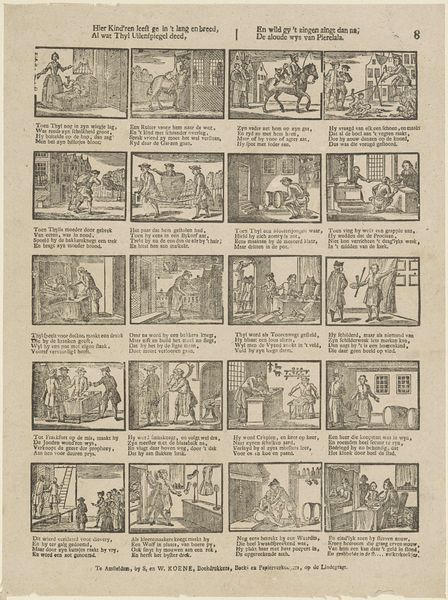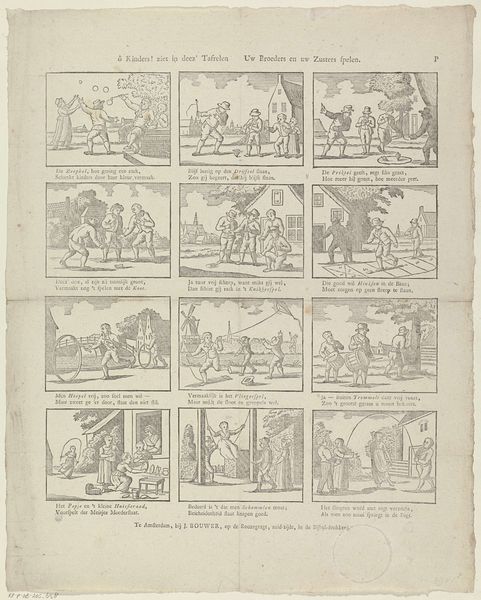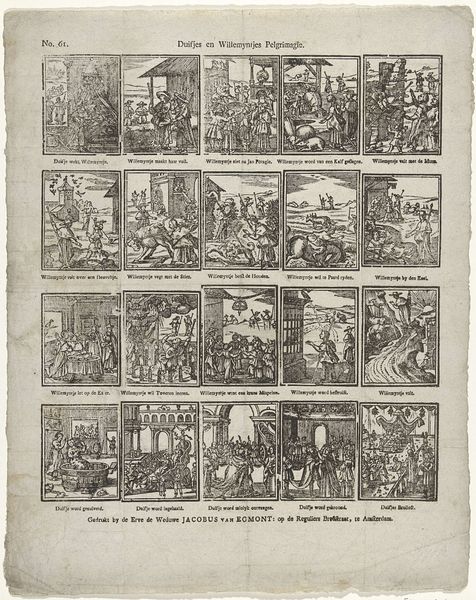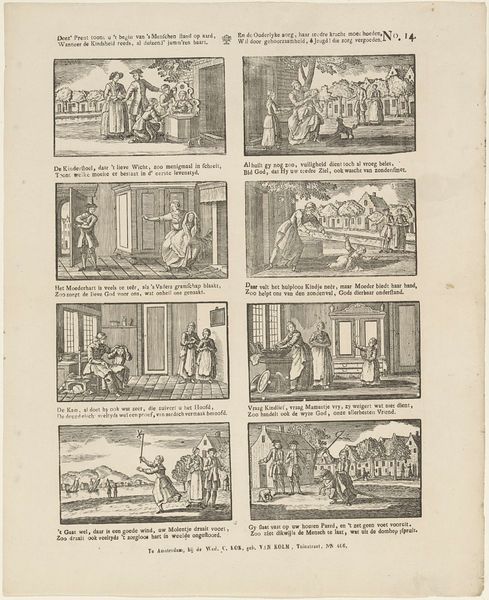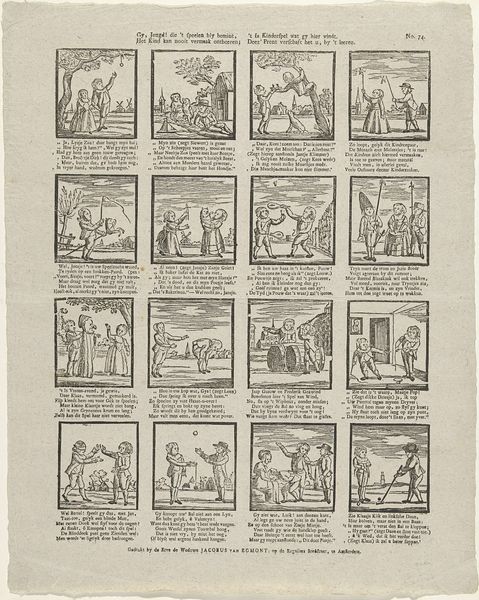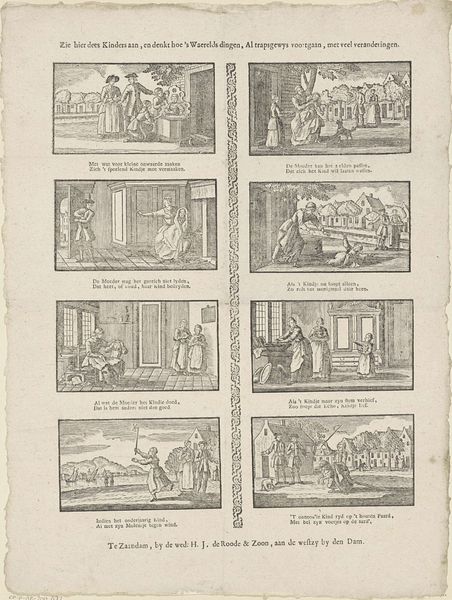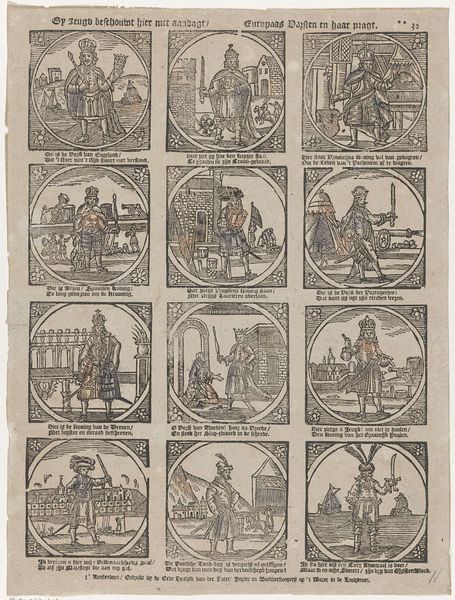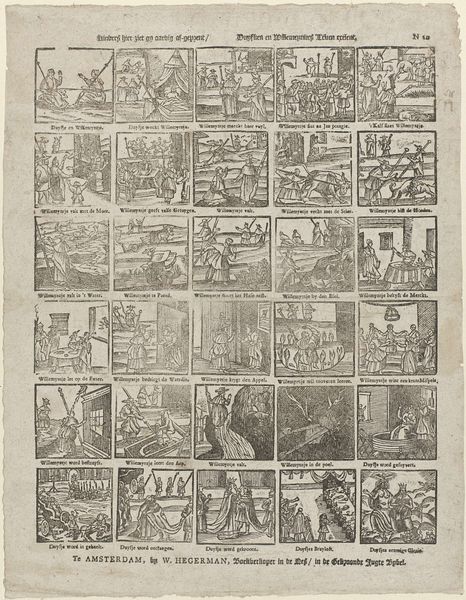
Wie stelt der menschen oefning perk, / Als zij, door kunst en handenwerk (...) 1794 - 1804
0:00
0:00
print, engraving
#
narrative-art
#
dutch-golden-age
# print
#
genre-painting
#
engraving
Dimensions: height 413 mm, width 295 mm
Copyright: Rijks Museum: Open Domain
Curator: What a fascinating print! This is "Wie stelt der menschen oefning perk, / Als zij, door kunst en handenwerk (...)" by Gerrit Oortman, created sometime between 1794 and 1804. It's an engraving, and part of the Rijksmuseum collection. Editor: My first impression is of organized chaos! Twelve miniature scenes packed onto one sheet, a series of tiny worlds within worlds. The crispness of the lines in the engraving almost gives it a technical drawing feel. Curator: Exactly. This artwork speaks to the socio-economic realities of the time. The collection of scenes displays a visual taxonomy of labour. The implication here is a glorification of the industrious citizen within the burgeoning mercantile society of the Netherlands. Editor: You know, each vignette really stands alone formally, and that’s partly why the grid-like layout works. There are repeated forms and directional lines in each scene that contribute to a visual balance to the whole page. It guides the viewer's eye despite the potentially overwhelming detail. Curator: It's powerful how Oortman highlights diverse labour, ranging from shipbuilding to religious practice. He connects the spiritual and the material, suggesting all honest work has inherent dignity. This sentiment comes during an interesting political time after the Patriot revolution, with the Batavian Republic trying to reconcile deeply rooted political tensions. Editor: Thinking about it more, the text overlaid on each image operates as another structuring device—a sort of architectural scaffolding to contain the visual story-telling. It certainly isn't an illustrative label. Curator: These aren't simple illustrations, definitely, each vignette acts like a piece in a larger argument of cultural identity. It asks us, the viewers, to consider who deserves a space within this visualized society, a kind of social cartography. Editor: From a design perspective, this engraving showcases a brilliant understanding of visual space. This feels quite deliberate. Curator: For me, this piece is important because it makes visible those who have often been rendered invisible. We need art like this as a reminder that the labor of many is essential for any society to progress. Editor: I appreciate your viewpoint! For me, focusing on visual presentation reveals just how carefully constructed images, even didactic ones like these, function as pieces of artistry in their own right.
Comments
No comments
Be the first to comment and join the conversation on the ultimate creative platform.


